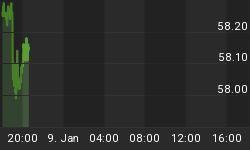Investment Scoring and Timing Newsletter
When do I sell my silver and gold? Are there ways of determining when to sell ones investment? In our opinion the two most important questions when investing are, "when do I buy?" and "when do I sell?" Analysis of the economy, price movements, interest rates, debt levels, unemployment, supply and demand, public sentiment etc. are all intended to help us determine when to buy and when to sell an investment. In this article we briefly discuss a typical method for determining when to sell an investment and then we explain our way of answering this question.
Before we begin, we wish to clarify that we think many checks and balances are crucial for answering investing questions. We always search for confirmation of our analysis by looking at the subject from many different angles. But is there a unique, simple way of determining when a bull market is likely to be coming to an end?
One common method of determining a potential maximum price in a bull market is to look at the markets past price movements. For example, we know that in 1980 gold had peaked out at about $850 for one ounce. So what would be a comparable maximum price for gold in the future? $1000? $3000? $5000? The problem with this analysis is that the US dollar price of gold is essentially a ratio between the metal itself and the US dollar. In this case we are trying to guess not only how much gold will rise but also what will happen to the measuring stick; the US dollar. This could prove to be exceptionally difficult.
We think an easier way to determine when an investor should exit from the Silver and Gold bull market is to determine a relative value. In other words, we substitute the effects of the US dollar measuring stick with other assets that can be purchased with the value of our silver and gold investment. We would like to know what our silver or gold is worth relative to other investment opportunities? Why?
This is what we know:
-
We know the value of our silver when measured in US dollars. Anyone can look up a chart of silver or gold in US dollars on the internet at anytime. But we also know that the US dollar is constantly varying in its purchasing power.
-
We do not wish to sell our investment and park it into cash. Our goal is to continually grow our investment through appreciation and/or income producing assets.
Therefore, in the future we wish to transfer our potentially over inflated, bubble status investments to a new market that is at its lowest valuation relative to the one we are currently in. We compare our investments directly to other investments in order to bypass the distortion and confusion of the currency fluctuations.
So how does this help us? We believe that all markets are cyclical. When one investment is overvalued and ready to decline, we expect to find another market that is undervalued and ready to appreciate.
For Example:
The above chart compares the price of silver in US dollars to a number of other markets. You will notice a black line that is the monthly price of silver in US dollars and a blue line that represents Our Custom Score of silver versus these other markets. When studying the chart you will see that over the past thirty three years, silver was at its most expensive value relative to these other markets. Stated another way, in 1980 these other markets were at their lowest value relative to the price of silver. While approaching 1980, it would have made sense to significantly lighten up on your silver investments and add to other investments such as stocks and bonds. In 1980 this relative value direct comparison would have allowed a silver investor to sell their current investment and purchase a larger quantity of these under valued investments. Or, as illustrated by the blue line on the chart above, it would have made sense to significantly lighten up on your stocks and bonds and purchase silver and gold at the year 2000.
Our strategy is to continue to add to our silver positions when silver is relatively undervalued to these other assets. We then intend to lighten up on our positions when silver is over valued relative to these other markets. We will determine this relative value through the regular analysis of the above chart and the custom blue line score.
Is this the only way to determine when to exit an investment? Is the above strategy fool proof, perfect, exact? Of course not. No trading strategy in the financial markets is flawless and we do not claim to have a perfect system for investing. However, at investmentscore.com we actively seek simple solutions to complex investing problems. The above chart is one example of our investment strategy in precious metals.
If you have enjoyed this commentary and wish to learn more, or if you wish to learn how to view an updated version of the above chart on a regular basis, please visit www.investmentscore.com. Additionally, we have outlined many reasons why we have invested in silver on our website. Click here for free commentary on the important question of "should I buy silver?"















